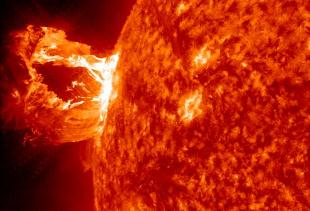Solar activity predicted to peak in early 2015 may release powerful geomagnetic energy that can disrupt electric grids, causing widespread blackouts and disrupting markets, says Lloyd's of London.
“One of the reasons that we are interested in activity on the sun in 2015 is that it has the potential to cause more damage now due to our increasingly complex electric systems and rapidly rising dependence on electricity,” Neal Smith, emerging risks and research manager at Lloyd's, tells PC360.
The insurance implications would start with contingent business interruption (CBI) claims, says Lloyd's in its report. Although standard CBI policies usually require evidence of physical damage to equipment, it might apply if transfor mers were to explode because of space weather.
mers were to explode because of space weather.
Recommended For You
Want to continue reading?
Become a Free PropertyCasualty360 Digital Reader
Your access to unlimited PropertyCasualty360 content isn’t changing.
Once you are an ALM digital member, you’ll receive:
- Breaking insurance news and analysis, on-site and via our newsletters and custom alerts
- Weekly Insurance Speak podcast featuring exclusive interviews with industry leaders
- Educational webcasts, white papers, and ebooks from industry thought leaders
- Critical converage of the employee benefits and financial advisory markets on our other ALM sites, BenefitsPRO and ThinkAdvisor
Already have an account? Sign In Now
© Touchpoint Markets, All Rights Reserved. Request academic re-use from www.copyright.com. All other uses, submit a request to [email protected]. For more inforrmation visit Asset & Logo Licensing.







